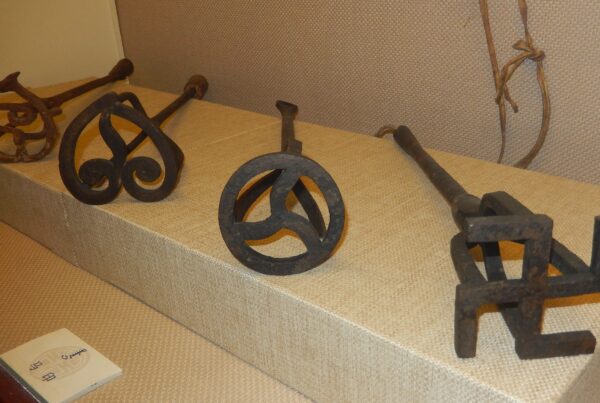The act of branding emerge with the practice of branding animals. Which dates back to 2700 BC, is a method of identifying ownership by inflicting a symbol, design, or word on a living thing using heated materials that have been expose to fire. Pictures of brandings on cattle can be seen in hieroglyphics discover in Egyptian tombs. As a means of casting protective enchantment over their livestock. The ancient Romans are claim to have chosen specific symbols to create custom branding iron.
The use of branding to permit various herds to mix while grazing spread through time in places like Spain. Where there were vast numbers of cattle. The idea originate in Europe and was brought to North America as a custom. The vaquero culture in the Southwest and Northern Mexico help the idea to develop further.
The Contribution of Ranchers in the Popularity of Branding
The Tehachapi Mountains were initially inhabited by ranchers in the 1850s. Who carried cattle along with them to hunt for food on the wide-open meadows and amid the oak forests. Naturally, there were not any boundaries back then in the early days, and cattle from various owners would occasionally mix. Ranchers use branding iron, a time-honored method that has been use for ages to settle disputes and prevent calves from being accidentally (or purposefully) claim as someone else’s. Ranchers in the American West came up with the concept to use an iron rod with such a sign attach to the end. That signified their ownership of whatever that sign was print on, and thus the branding iron was create as the branding method spread throughout the region. Many cattle would graze on the broad range. And when it came time to take the cattle to rail yards or stockyards on their way to market. Branding became a dependable method of identifying the cattle that belong to various ranches.
Reasons Why Branding Cattle Became Essential
Large herds of cattle roam the Great Plains and reproduce throughout the US civil war. When labor was in limit supply on many ranches. This result in many of the thousands of cows and sheep that had not been brand. This is why, after the Civil War. Many former soldiers turn into cowboys to assist with branding, herding, and cattle drives. In addition, branding remained crucial to ranching even after. The West’s property lines were largely fence up because cattle continue to escape and end up on nearby ranches.
Cattle branding was also use to dissuade cattle rustlers. But thieves got adept at manipulating brands in order to conceal their stolen commodities. A mechanism for keeping track of all the brands was require since there were so many of them, and legislation requiring livestock owners to do so quickly follow. Ranchers carried pocketbooks to keep track of their cattle’s identification. In order to ensure that the bill of sale for the cattle match the brands note, cattle were check as they cross between regions. Brands serve as trademarks and serve as a tool for tax and regulation enforcement.
Creation of Various Branding Symbols
The creation of an authentic brand has become a skill given the abundance of branding possibilities available. Ranchers refer to themselves as being lazy, crazy, flying, and strolling when they use simple numbers and letters with a symbol. Styles were add by modifying the way the character or sign look. The placement of the branding on the animal’s body provide additional information about the ranch it came from. The location of the brand was typically on the left hip. Though the exact reason is still up for debate, some cowboys assert that the left side is easier to see for right-hand ropers as well as that the calves usually mill to the left, making it simpler to identify brands in auction rings.
Why Branding Cattle is Still in Function Today
With a lengthy history, branding is still very much in use today for a lot of the similar reasons it was initially develop. Even though more advance methods of tracking cattle. Which include GPS tagging and DNA analysis, have been develop, branding cattle remains the most successful deterrent to fraud and theft. It appears that branding animals will remain a ranching practice for many years to come because the most successful branding tools are the simplest and have the least negative effects on the cattle.
Other Popular Uses of Branding Iron
Wood
To imprint their manufacturer’s mark or brand emblem. Woodworkers frequently use an electrical or a fire-heat branding iron. In compliance with ISPM 15, wood pallets and other packaging use for exporting wood are frequently tag in this manner to show that the wood has indeed been treat to stop pests from moving through it.
Steak
By leaving a mark on a steak to indicate how well done it is or to designate the grill master or chef. Steak branding tools are frequently employ by barbecue fans as well as professional chefs.
Leather
Horse gear manufacturers frequently use a branding iron instead of a steel leather stamp in order to denote their craftsmanship.
Bakeries
In addition to steaks, branding is also done on many other food items, such as buns, breads and cake to imprint the creator’s mark on the food items.
Why Is Branding Preferable to Other Marking Methods?
The fact that branding is a cheaper solution is one of their main advantages over other methods of imprinting. Nearly any pattern can be simply applied on the marking surface, and they require little care to remain effective for a long time. For artists or artisans who want to swiftly leave a lasting impression, a branding iron is the perfect answer because it is also simple to use. This is particularly true given that numerous materials can be mark using the same branding setup.
Conclusion
Even though a branding iron was formerly a widely use instrument in the West, it continues to be an enduring remnant of the ranching culture, along with being employ for multiple other purposes today.








